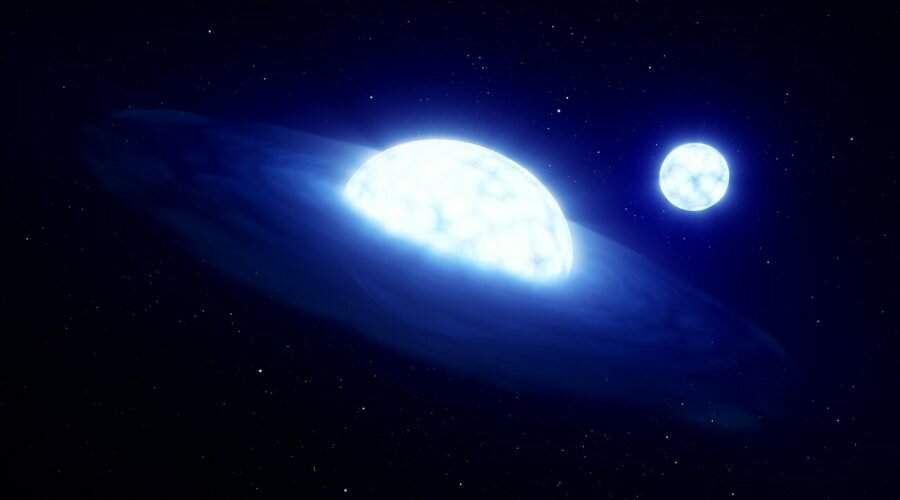The closest black hole system to the Earth, found about 1,000 light years away, doesn’t actually contain a black hole, according to a new study.
When it was discovered in 2020, two scenarios were proposed for the discovery of the unusual HR 6819 system, one with, and one without a black hole.
The idea of a black hole just 1,000 light years away, within our stellar neighbourhood, hit the headlines at the time of the discovery and was presented as the main finding – with the other scenario not being widely reported.
However, a new study, by researchers from KU Leuven in Belgium, took new measurements of the system, to see which scenario was most likely to be true.
They pointed the European Southern Observatory Very Large Telescope (ESO, VLT), and the VLT Interferometer at the star system, as this instrument can provide decisive data required to distinguish between the two explanations.
All the evidence pointed to a ‘vampire’ star system, finding two stars in a very close orbit, with one ripping material from the other. There was no evidence of a distant orbiting star, as would be required by the black hole theory.
“We had reached the limit of the existing data, so we had to turn to a different observational strategy to decide between the two scenarios proposed by the two teams,” says lead researcher Abigail Frost, an astrophysicist from Katholieke Universiteit Leuven in Belgium.
That strategy involved using the ESO’s Very Large Telescope (VLT) and a light-comparison tool on the Very Large Telescope Interferometer (VLTI).
Sure enough, the instruments on the VLT found there was nothing glowing brightly at the wider distance of around 100 milliarceconds. The VLTI confirmed instead that the stars sit right up close to one another, at just 1 milliarcsecond.
In other words, this means no black hole is required. They’re just two ordinary stars in a garden-variety binary relationship.
Note that ‘ordinary’ here doesn’t imply boring. We’re seeing the pair at a very specific stage close to stellar retirement – a moment where one partner has recently drained its partner of its atmosphere, like some kind of cosmic vampire.
“Catching such a post-interaction phase is extremely difficult as it is so short,” says Frost.
“This makes our findings for HR 6819 very exciting, as it presents a perfect candidate to study how this vampirism affects the evolution of massive stars, and in turn the formation of their associated phenomena including gravitational waves and violent supernova explosions.”
Sure, having a stellar-sized black hole just down the street would have been a boon for astronomy. But a satisfied vampire and its victim on our doorstep is still a discovery that will tell us a lot about the weird ways our Universe works.
Sources: https://www.aanda.org/articles/aa/full_html/2022/03/aa43004-21/aa43004-21.html

